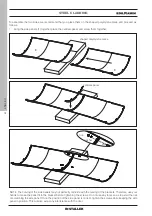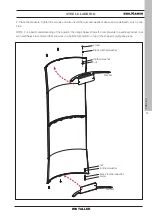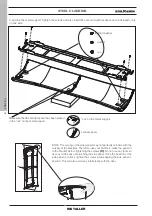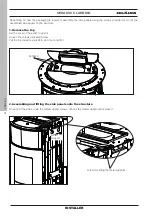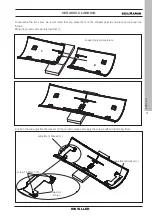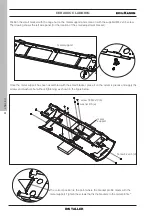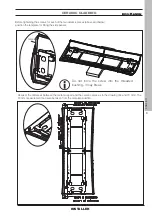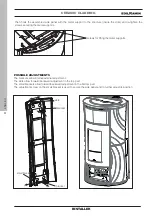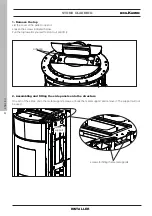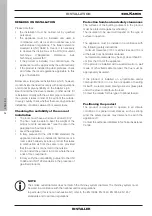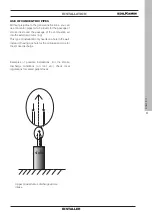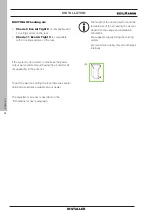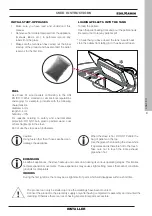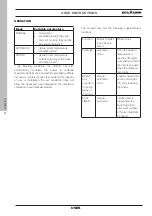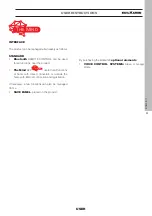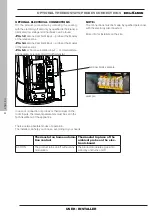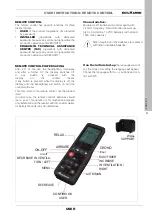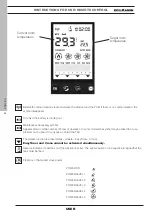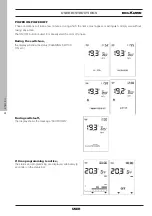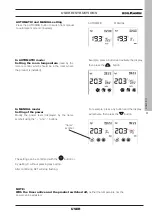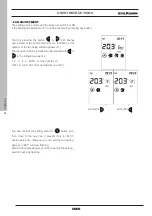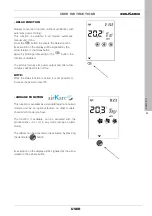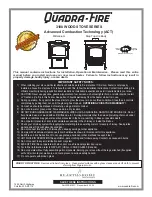
28
ENGLISH
INSTALLATION
INSTALLER
THE FLUE
THE FLUE
:
In addition to the general instructions applicable to the
fume duct and the flue, the flue::
• must only be used for discharging fumes;
• must be correctly sized to satisfy the requirements
for flue gas discharging (EN 13384-1, a non-
exhaustive example);
• must preferably be insulated, made of steel and
with a round inner cross-section. If rectangular, the
corners must have a radius of no less than 20 mm,
with a ratio between the inner dimensions <1.5;
• must normally have a minimum height of 1.5
metres;
• must have a constant cross-section;
• must be waterproof and thermally insulated to
ensure proper draught;
• preferably mount a collection chamber for unburnt
residues and any condensate build-up;
• if pre-existing, it must be clean to prevent fire
hazards;
• in general, we recommend embedding the flue
in the existing masonry chimney if its diameter
exceeds 150 mm; the technician who sizes the
pipes must assess the situation.
EMBEDDED SYSTEM
EMBEDDED SYSTEM
:
In addition to the general requirements applicable to
the fume duct and the flue, the embedded system
must:
• operate in negative pressure;
• be open to inspection;
• comply with the local regulations.
THE CHIMNEY POT
THE CHIMNEY POT
• must be anti-downdraught;
• must have an internal cross section equivalent to
that of the flue and a fumes outlet at least double
that of the interior of the flue;
• for dual flues (which should be spaced at least 2
m apart) the chimney pot receiving the fumes from
the solid fuel appliance or that from the higher
storey, must be at least 50 cm higher than the
other;
• must extend beyond the back-flow zone (in Italy,
refer to UNI 10683 point 6.5.8.);
• must allow for maintenance of the chimney.
EXTERNAL AIR INTAKE
In general, we suggest two alternative ways for ensuring
a proper flow of indispensable combustion air.
Indirect air intake
Install an air outlet at floor level with an effective surface
area (net of the screen or other protections) of at least
80 cm
2
(10 cm in diameter).
To prevent draughts, we recommend installing the
intake behind the stove or behind a radiator.
Installing it in front of the appliance will create
unpleasant draughts.
Direct air intake
Install an air intake with an effective size (net of the
mesh or other protective equipment) that is at least
equal to that of the air intake at the back of the product.
Choose the diameter based on the load losses.
Connect the air intake to the appliance's air intake
with a pipe that may also be flexible. Increase the pipe
diameter if the pipe is not smooth: assess any load
loss.
A maximum length of 5 metres is recommended, with
no more than 3 bends depending on the draught of
the flue.
The air may be drawn from an adjacent room only if:
• the flow is taken from permanent and unobstructed
openings communicating with the outdoors;
• the air pressure in the adjacent room is never
lower than that of the outdoor pressure;
• the adjacent room is not a garage, subject to fire
hazard, a bathroom or a bedroom;
• the adjacent room is not a shared room in the
building.
In Italy, the UNI 10683 standard states that ventilation
is sufficient even if a pressure difference between
the outdoors and indoors of no more than 4 Pa
is guaranteed (UNI EN 13384-1 standard, a non-
exhaustive example). The installer who issues the
declaration of conformity is responsible for ensuring
these conditions.
Summary of Contents for CHERIE 11 EVO
Page 78: ...78 ENGLISH USER INSTALLER ...
Page 79: ...79 ENGLISH USER INSTALLER ...

